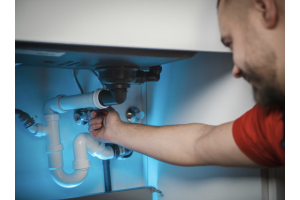Understanding the Basics of In Vitro Fertilization (IVF)

In vitro fertilization (IVF) is a groundbreaking assisted reproductive technology that has revolutionized the field of fertility treatment. It offers hope to millions of couples struggling with infertility and has helped them achieve their dreams of starting a family. If you're considering IVF or simply curious about how it works, this article will help you to find out more about IVF.
What is In Vitro Fertilization (IVF)?
IVF is a fertility treatment method that involves the fertilization of an egg with sperm outside the woman's body, in a laboratory dish. The term "in vitro" means "in glass" in Latin, referring to the laboratory environment where the fertilization process takes place. Once the embryos have formed, they are transferred back into the woman's uterus for implantation and pregnancy.
Step 1: Ovarian Stimulation
Before the IVF process begins, the woman undergoes ovarian stimulation to promote the growth and development of multiple eggs. This is typically achieved through the administration of hormonal medications. Regular monitoring of the ovaries is conducted using ultrasounds and hormone level measurements to ensure the eggs are maturing properly.
Step 2: Egg Retrieval
Once the eggs have reached the desired size, a surgical procedure known as egg retrieval is carried out. Under light sedation, a thin needle is inserted into the ovaries, guided by ultrasound imaging. The eggs are gently aspirated from the follicles and collected for further processing in the laboratory.
Step 3: Sperm Collection and Preparation
Simultaneously with the egg retrieval, the male partner provides a sample of semen. The sample is processed in the laboratory to separate the sperm from the seminal fluid. The high-quality sperm are then selected for the fertilization process. In cases where the male partner has fertility issues, sperm can also be obtained through other methods, such as surgical extraction or the use of donor sperm.
Step 4: Fertilization and Embryo Development
Within the laboratory setting, the eggs and sperm are united either in a petri dish or specialized culture media, creating an environment conducive to fertilization. This process can be accomplished through two primary methods: conventional in vitro fertilization (IVF) or intracytoplasmic sperm injection (ICSI). In conventional IVF, a generous amount of sperm is combined with each egg, allowing for natural fertilization to occur. Conversely, ICSI involves the direct injection of a single sperm into each mature egg. Subsequently, the embryos are closely monitored over several days as they progress through development.
Step 5: Embryo Transfer
After the embryos have undergone development and reached a suitable stage, they are transferred back into the woman's uterus. This is a relatively simple and painless procedure that does not require anaesthesia. The number of embryos transferred varies depending on various factors, such as the woman's age and embryo quality. Any extra embryos can be cryopreserved for future use.
Step 6: Pregnancy Test
Approximately fourteen days following the embryo transfer, a pregnancy test is conducted to ascertain the outcome and effectiveness of the IVF treatment. If the test is positive, the woman continues with regular prenatal care to monitor the progress of the pregnancy. If the test is negative, further discussions with the healthcare provider may be necessary to explore other options.
In conclusion, IVF offers hope and possibilities for couples struggling with infertility. Through a series of carefully orchestrated steps, IVF can give them the chance to fulfil their dream of having a child. With advancements in technology and ongoing research, the field of assisted reproductive technology continues to evolve, providing even more options for individuals and couples longing for a family of their own.






